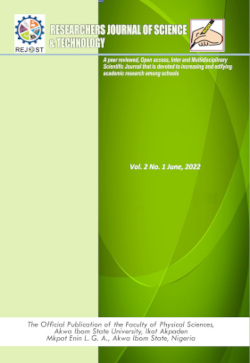Enhancing Data Integrity in Telemedicine System Using Blockchain Approach
Keywords:
Telemedicine, Blockchain, Algorand, Smart Contract, Cryptography, Electronic Health records (EHR)Abstract
The improvement that has come with tele-medicine has resulted in the availability of healthcare for all patients, especially those who reside in areas with a shortage of nearby medical professionals. This has also made it less expensive compared to in-person appointments. Records tampering by health workers and other forms of data breaches have come to affect the confidence of telemedicine systems. This research work aims to design a telemedicine system using the Algorand blockchain platform by incorporating the features of blockchain, to enhance data integrity by providing tamper-proof and unauthorized access and using Algorand Smart Contract (ASCIs) to enable, secure and provide verifiable management, allowing patients to control and provide explicit consent, this empowers patients with greater control over their data. Python programming language and PHP is used for the front end, and Algorand, which uses Python language for Algorand Smart Contracts (ASCIs), implemented using a stack-based language called Transaction Execution Approval Language (TEAL) for the backend. The methodology adopted is the Direct Science method, which applies process steps such as problem awareness, suggestion, development, evaluation, and conclusion. This eventually gives a robust system that is tamper-proof and provides a cost-effective and scalable platform compared to the existing work. This helps address concerns such as data breaches, unauthorized access, and data manipulation, which can compromise the safety and confidentiality of patients' sensitive medical information.
References
Abugabah, A., Nizamuddin, N., &Alzubi, A. A. (2020).Decentralized telemedicine framework for a smart healthcare ecosystem. IEEE Access, 8, 166575-166588.
Chatterjee, A., Shahaab, A., Gerdes, M. W., Martinez, S., &Khatiwada, P. (2021). Leveraging technology for healthcare and retaining access to personal health data to enhance personal health and well-being. In Recent trends in computational intelligence enabled research (pp. 367-376).
Gregor, S., &Hevner, A. R. (2013). Positioning and presenting design science research for maximum impact. MIS quarterly, 337-355.
Miller, V. S. (1985, August). Use of elliptic curves in cryptography.In Conference on the theory and application of cryptographic techniques (pp. 417-426). Berlin, Heidelberg: Springer Berlin Heidelberg.
Prabha, P., &Chatterjee, K. (2020, December).Securing Telecare Medical Information System with Blockchain Technology. In 2020 2nd International Conference on Advances in Computing, Communication Control and Networking (ICACCCN) (pp. 846- 851). IEEE.
Szabo, Nick. (1994). Smart contracts. Unpublished manuscript.
Vaishnavi, V. K., & Kuechler, W. (2015). Design science research methods and patterns: innovating information and communication technology. Crc Press.
Wang, X., Zha, X., Ni, W., Liu, R. P., Guo, Y. J., Niu, X., & Zheng, K. (2019). Survey on blockchain for Internet of Things. Computer Communications, 136, 10-29.
Wong, D. R., Bhattacharya, S., & Butte, A. J. (2019). Prototype of running clinical trials in an untrustworthy environment using blockchain.Nature communications, 10(1), 1-8.
Yaqoob, I., Salah, K., Jayaraman, R., & Al-Hammadi, Y. (2021). Blockchain for healthcare data management: opportunities, challenges, and future recommendations. Neural Computing and Applications, 1-16.
Koblitz, Ν. (1987). "Elliptic Curves Cryptosystems", Mathematics of Computation, vol. 48, pp. 203-209.

Downloads
Published
How to Cite
Issue
Section
License
Copyright (c) 2023 Researchers Journal of Science and Technology

This work is licensed under a Creative Commons Attribution-NonCommercial-NoDerivatives 4.0 International License.




